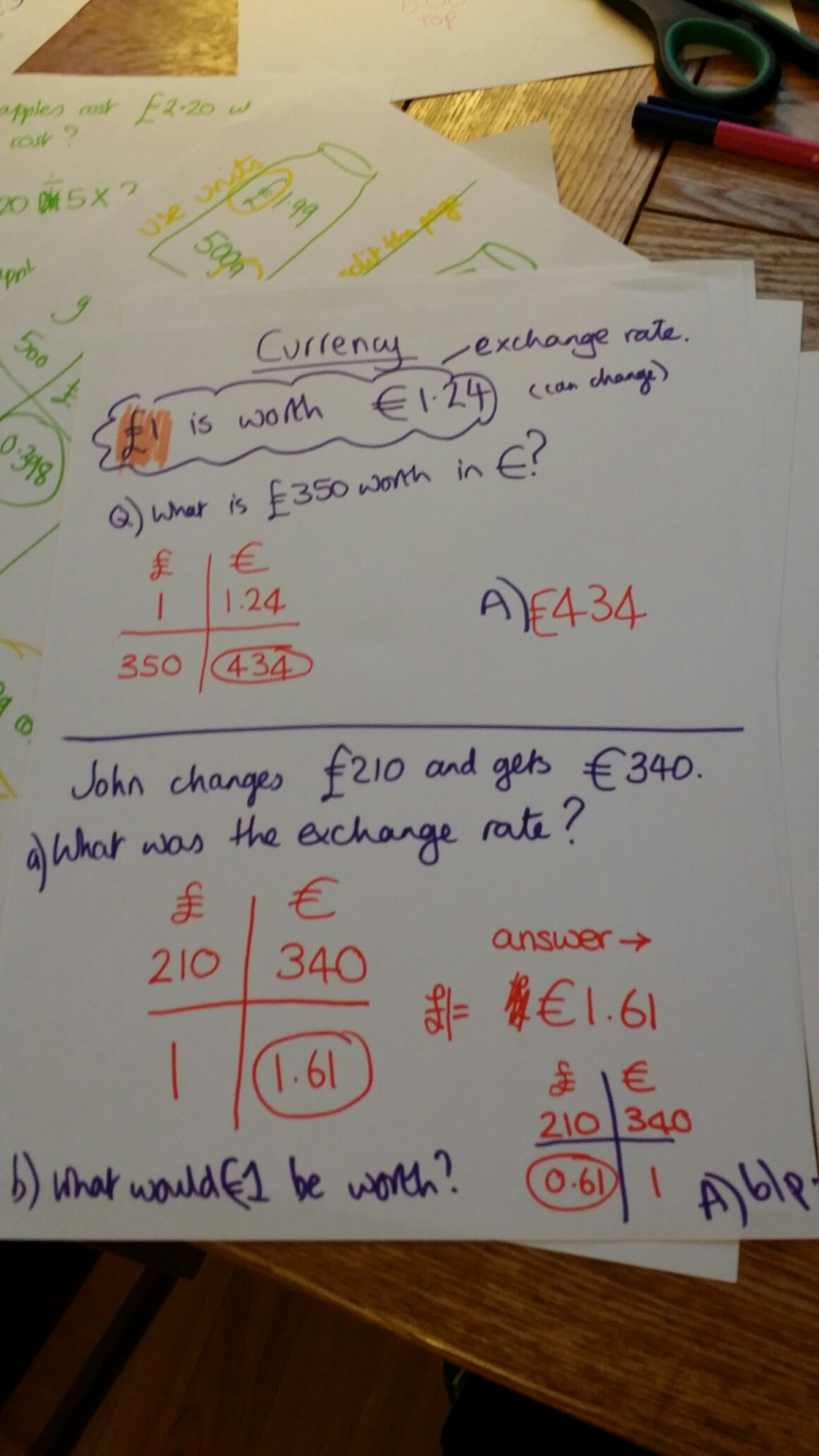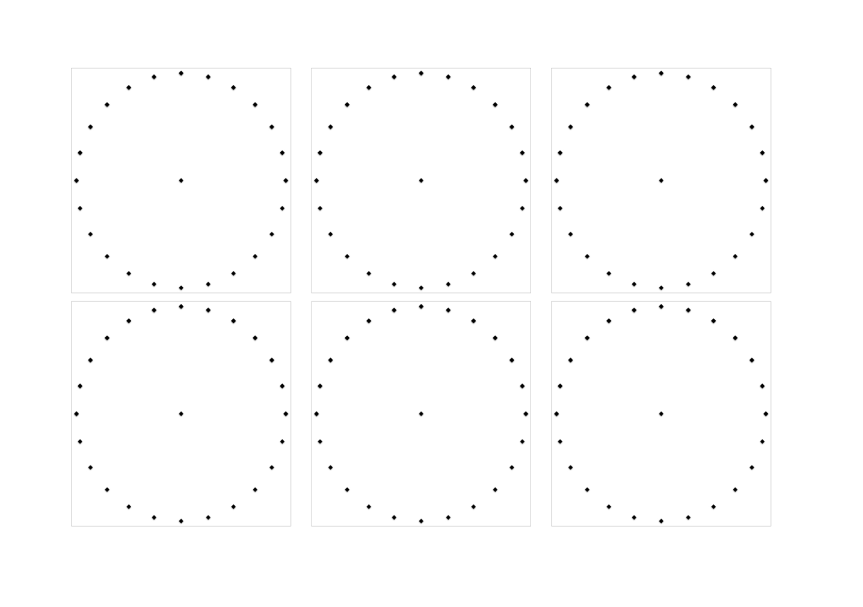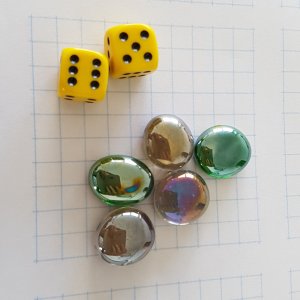I am very sorry to hear it. That’s a really tough thing for you to watch.
You may be thinking “I wish I could do this Maths myself, then I could help”. There are several reasons that this can come about: Perhaps you are “rubbish at Maths” yourself, perhaps you were OK at Maths at school, but just rusty with most of it, or perhaps your child is doing a topic (or doing something in a particular way) that you have never seen before. But you may be surprised to hear, that parents who are very good at Maths themselves, may well find it very difficult to support their struggling child, and often approach me and ask me to help them.
What you need at this point, to help your child, is lots of understanding of “how to help”. Not, lots of understanding of Maths. I hope this encourages you. Remember all the times you have successfully helped your child to learn something? That’s the skill.
Good
If you had phoned me up, and asked me for help, saying “my child is struggling with Maths”, I would have replied “Good!”. I don’t mean “I am glad your child is miserable and frustrated”. I mean, “I am glad your child is still struggling, still making an effort, I am really glad your child has not just shut down”.
The very fact your child is still struggling with Maths, means they still want to succeed. That is a huge positive.
Does he want to be helped?
This is really important. A person can struggle and still really want to solve the problem for themselves. It is incredibly rewarding to solve a puzzle, to finish a jigsaw, to reach a new level in a game. Badly timed help can take all the satisfaction out of it. Even a child in tears, may just want a hug, and then to succeed on their own. Remember that time you walked into a clothes shop and looked around and an assistant zoomed over to you and said “Can I help you?”. Often, the answer is, “No, I am just looking”. Your child’s response may be “no, I just want…” So listen to that, and help the way THEY want to be helped.
The right time and place
So, you’ve checked, and your child says yes, they want some help. You need a time and a place where you will be in a slightly different mode from normal. You are struggling with lockdown. Working from home. Coping with more than you can actually cope with. You don’t find it easy to do this Maths Teacher thing. So try to give yourself the maximum chance of success. Decide a time and a place when you will help them. Ideally, you can use a table and chairs, so you can spread some paper and pens out. Probably, you will need a computer to show you the question they are stuck on. Or, It might be on paper or in a book.
My son asked me for some Maths help Year 11. I was astonished. He had maintained, doggedly, that he was not going to let me help him. I am good at Maths, his elder sisters are good at Maths as well, and he was determined to be himself, a Maths-hater, whose Maths grade was less than the other subjects, the ones he actually liked. But his resolve broke when he saw his Mock GCSE results, and the Maths grade stuck out like a sore thumb against all the others. He admitted defeat and asked me to help him.
I offered to get him a proper paid tutor (Yup, I do understand it’s hard to teach your own child!!!), and he refused, on the grounds that then he would have to do a set hour each week, and he wanted to be able to get small lessons, ad hoc, when he wanted them. On his terms. I was happy to accept his terms, as long as he accepted mine. We would use the table and chairs in my teaching room, and he would behave himself. No loud sighing. No laying his head on the desk. He said OK then, as long as he could stop a lesson when he wanted to, with no argument from me.
Rules established, we started our very first Maths Lesson. Within 30 seconds his head was on the desk. I reminded him of the agreement and we were on track. He “drove”. In other words, he came to the mini-lessons with a question in his hand (now, it would be on a screen), and I answered his questions about it. When he had had enough, we stopped.
I don’t remember, now, how many lessons we did like that. But his GCSE grade in Maths was nice and harmonious with all the others, and now he is a primary teacher, teaching Maths himself, alongside everything else. If you had suggested to me back then, that my 16 year old son, who loved his X-box and his guitar, would be a teacher, I would have been incredulous. Honestly. It is so hard to imagine the adult that our child is going to become. That adult is properly invisible, most of the time.
I am rubbish at Chinese
I think I can imagine what you mean, when you say “I am rubbish at Maths”. Have you failed Maths exams? Have you struggled with school Maths? Does Maths freak you out, even now? Does my suggestion of you sitting beside your child, looking at a Maths problem together, just make you want to cry?
First things first. However bad you are at Maths, you can still help. You have already made the decision to try to help, I know that because here you are, reading. You are still trying and struggling to help, you have not shut down.
You can help your child with Maths.
I know that, because I helped my son with Chinese.
My son had the very unusual chance, at school, to study Chinese in Year 8 and if he wanted to, to take it to GCSE. He liked languages, so he had a go at Chinese. Hand on heart, I am rubbish at Chinese, myself. I spent quite a lot of time and effort helping his with his Chinese homework and I have retained nothing at all. I think that’s a pretty convincing way of proving I am rubbish at it…
But I don’t think I was rubbish at helping him, or he would have stopped me from trying. He would come home from school with 10 or so characters that he had to learn for a test. And he had no idea, really, how to do that. So I would say….
Show Me
… and he would show me the first character. And it was Chinese, so it meant nothing at all to me. But we would discuss the character. This one has a little thing that looks a bit like a fishing net. That one, it has 2 legs. And if you compare those ones, see they have the same top bit? And our discussion would have the effect of making HIM really, properly, look at each character and start to fix it into his memory, ready for the test. This was a memorisation exercise (I know Maths is often more about understanding). For memorisation, I would make cards, and he would draw each character onto the front of the card, and write the meaning on the back. And then I could test him, and he could test himself, and we would know when to stop, because he could recognise all the characters correctly, on the cards.
Don’t recycle all those cardboard boxes to quickly
You can make cards, for memorisation, out of empty cardboard boxes. Cereal packets, pizza boxes, whatever is available. Put the thing to learn on the blank side and the answer on the printed side.
You learn, too
By the end of one of those sessions, I would have been able to score a few marks in his Chinese tests too. I was happy for him to test me and to discover I was “rubbish” at it, that encouraged him and made him feel good. If I was un-rubbish and able to remember the meaning of a difficult character, I would let him into my secret “see the little pair of whiskers there, I’m thinking cat, and this one means …”, so I was giving him a clue that might help him. Or it might not.
I didn’t need him to learn MY way of memorising pictures, I wanted him to do well in his lesson, that was all.
It’s nice for a child to win a competition with the parent. I am honest and stopped “trying to lose” games once they were old enough to notice, but often your child will sail effortlessly past you in a skill, they have a young brain and it is really, really good at learning new things. That moment, when they cruise past you. That is what success feels like. You may feel small, and not like it very much. Classroom teachers can find it challenging too, but it is a sign that you are teaching really, really well.
Can you do a bit of the question?
I am imagining you are looking at a Maths problem together. Your child can’t do it. Perhaps you can, or perhaps you can’t. That isn’t relevant to the next step, actually. However tempted you feel, don’t grab the pen and start doing the question yet. The danger is, you will reinforce their belief that they are rubbish at Maths. This question does not need to be done. It can wait.
If you are lucky, all they needed was a bit of encouragement to get stuck in, and in 5 minutes they will be happy and smiling and the question will be finished.
No? Then, click here and read a really excellent page of advice, on how to help your child with Maths





 3 or 4
3 or 4 


